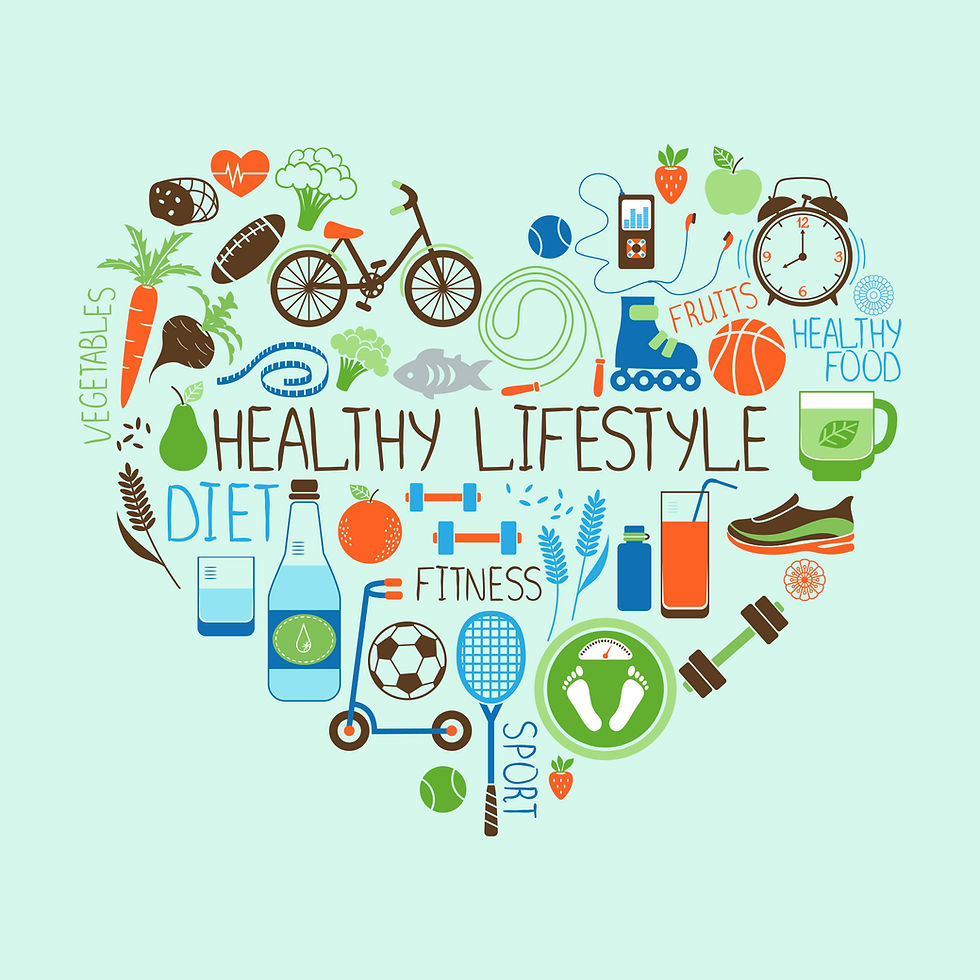Factors That Affect Fitness
- Jason "Coach" Tate
- May 4, 2023
- 3 min read

There are many factors affect a person's fitness and their fitness potential, some of which can be influenced and some of which cannot be changed.
Genetics
Genetic background can not be changed but will play a huge part in a person's maximum potential in fitness. Although elite athletes train very hard to get to where they are, many elite athletes are born with the genetic make up to become elite. The main problem with "Genetic Potential" is nobody knows what their potential levels is.
Age
As people age, many of their key components of fitness start to decline leading to a natural loss in fitness. For example Cardiac Output and Stroke Volume affect Cardiovascular fitness potential and the decline in Muscle Mass affects Strength and Power. Those that have a higher level of fitness to begin with are less affected by the natural decline caused by ageing.
Gender
Male of Female will affect their maximum fitness potential. In general men have an advantage over women when it comes to maximum fitness potential as they tend to have larger hearts, lungs and blood volume (Cardiovascular Fitness) and a higher level of anabolic hormones making it easier to generate muscle mass and the benefits that come from it. Only in the past few years as more women get into competitive professional sports are we seeing a rise in the perceived perception of what women are/will be capable of in fitness.
Medical History
It is important to note that anyone with a significant medical history (injury or illness) can affect the maximal potential to improve fitness levels. Medical history may effect exercise type, intensity and duration of training.
Training History
Although fitness cannot be stored, a person with a previously high active lifestyle and has previously achieved a certain level of fitness is likely to have an advantage over the person who has never been active. Previously active people will have a better idea about what they must do in order to become fitter but they may also have positive/negative associations with certain types of activity and exercise.
Current Training Status
Current training status obviously has an impact upon the current level of fitness and level of fitness that can be achieved within the near future. A person currently in a training regime is likely to be much fitter than someone with a sedentary lifestyle.
Nutritional Status
One of the biggest factors affecting the ability to achieve a high level of fitness is diet. Are people currently eating the correct type and amount of food for their level and type of activity. Health, current level of fitness and each individual's ability to break down certain foods need to be taken into consideration on each individual diet.
Recovery/Sleep
The amount of sleep and the quality of sleep that people achieve on a regular basis can have a significant influence on their ability to develop their level of fitness. Poor sleep habits can be detrimental to fitness adaptations. It is important that people take time to recover properly from any exercise they undertake in order to achieve optimal levels of fitness.
Lifestyle
Lifestyle includes many factors such as occupation, leisure pursuits, use of recreational drugs, smoking habits and alcohol consumption which negatively affect both current level of fitness and the ability to develop fitness. Work & leisure activities plays a major part of lifestyle for example an individual who works a 60 hour week will have less time to devote to fitness than someone who works a 20 hour week. Outside of work how people like to spend their spare time can also be described as lifestyle.
Note these are some factors that affect the starting point in anyone's fitness journey and there maximal fitness potential but should NEVER be used as an excuse or reason to not pursue your maximum potential.

